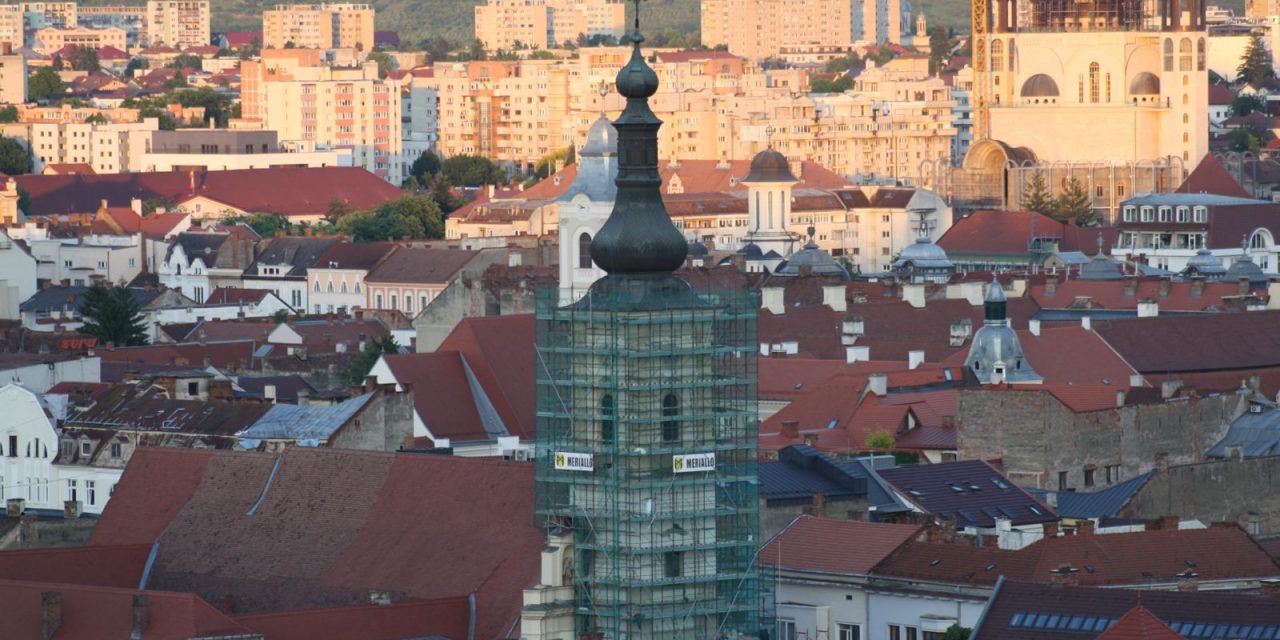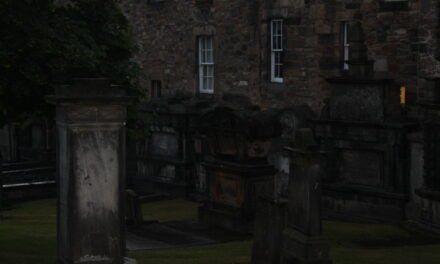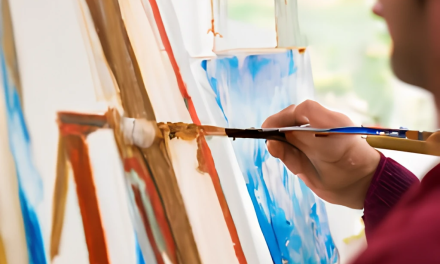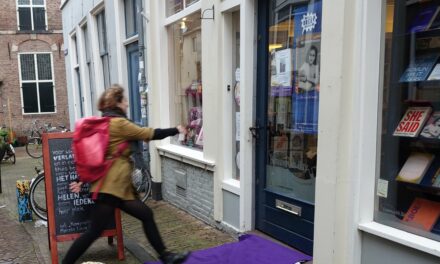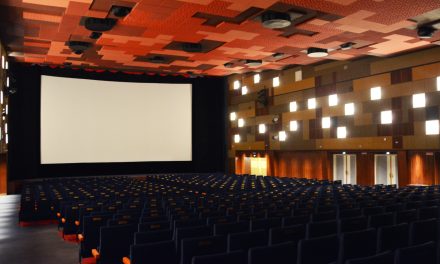Cranes, steel constructions and the sound of drilling. Through the mesh of protective material, silhouettes of authentic buildings and church towers can be seen. Walking through Cluj-Napoca, you can’t miss the massive scale of renovations. And that’s no surprise, considering the rapid changes the city is undergoing. But how does Cluj preserve it’s cultural identity during all these renovations?
The Sustainable City of the Future
Cluj, the second-largest city in Romania, is one of the fastest changing cities in the country when it comes to sustainability. The push for a greener city comes with major renovations. On nearly every street, renovations to different extents can be seen. These efforts are part of the city’s ambition to become climate-neutral by 2030. Cluj has been selected as one of the 100 cities in the EU Mission ‘100 Climate-Neutral and Smart Cities by 2030,’ giving it access to European support and funding. Lots of apartments are being thermally renovated. This means improving different buildings and mostly apartments to reduce heat loss and increase energy efficiency. The goal is to use less energy for heating.
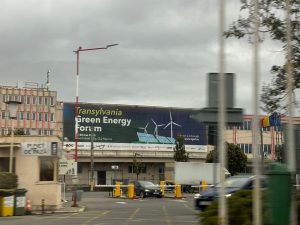
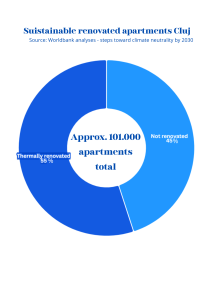
All over the city are signs with ads for sustainable projects
One of the neighborhoods included in this plan is the Mănăștur district. According to Zona Metropolian Cluj, the focus is on energy savings, behavioral change and the promotion of green mobility. The district is undergoing a green transformation. A former thermal energy building has been destroyed and replaced with a modern 950 m² play and recreation park. Plans are also made for developing new green spaces, including the 10-hectare Colina Park and the redevelopment of the 4.3-hectare ‘La Terenuri’, sports and recreation area. These sustainable changes, that come with destroying and renovating are reshaping the way the city looks and maybe also how it feels.
Cultural Authenticity in Cluj
To know more about cultural presevervation in the city, it’s important to get an idea of how the culture of Cluj is structured. Cluj has a layered history that is often reflected in the architecture. Gothic buildings from the medieval period, such as the 14th-century St. Michael’s Church, stand alongside Baroque palaces from the 17th-century Habsburg era like the Banffy Palace. A more recent architectural layer comes from the communist period, recognizable in the concrete square-shaped apartments.
It’s not just architecture that reflects the city’s identity. Cluj has also been a long time home to Hungarians and Saxons, making it a multicultural space, also in current times. Many street signs and institutions are bilingual. Historically seen, Cluj has also been a hub for traditional arts like music, theatre and visual arts. The contrast between traditional culture and directly next to it trendy cafés and startups, is what defines the city today.

Renovations of Transylvanian Gothic building with modern elements
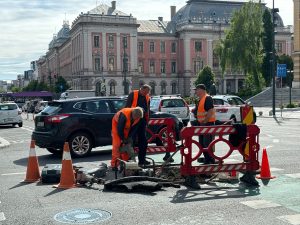
Street renovations with a government building from the Austrian-Hungarian period in the background
The Mănăștur district, mentioned earlier, is one of the most densely populated neighborhoods that has a history as a working class area from the communist era. This makes cultural preservation and community engagement especially important there.
Renovation Without Losing Identity
While neighborhoods like Mănăștur become greener and more modern, the question can be asked: Can the city stay true to its identity with all these changes?
There are some things the city already does to preserve culture. For example, historic buildings are not destroyed but carefully restored. The Cluj Green Infrastructure Development Initiative states that when energy-efficient improvements are made, like thermal insulation or new heating systems, the architectural features are preserved. In the historic center, strict heritage protection rules are in place, making sure materials and colors match the original ones.
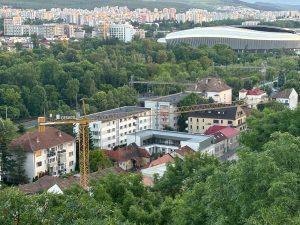
Cranes at work from above
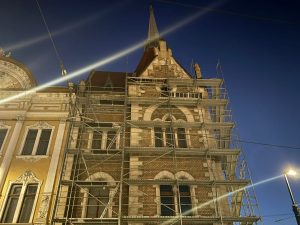
Renovations of authentic church tower
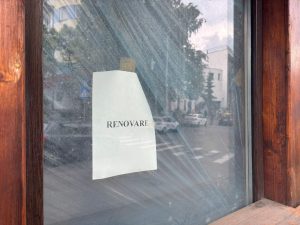
‘Renovations’
The city also applies a ‘place-based’ approach, which means that history, culture, and urban routes are used as the base for development. For example along the Someș River, old bridges, industrial elements and natural features have been carefully integrated into new designs. Residents also play a key role in preserving culture. Through the Civic Imagination and Innovation Center, residents can provide input that helps protect the cultural value of their neighborhoods. Residents can for example vote on what purpose a run-down building will have after it’s been renovated. Cluj is quite eager to prevent gentrification. This means they don’t want to push away existing communities because prices are getting too expensive after renovating a neighborhood. If original residents stay, the existing altered cultural identity also stays.
Not just Cluj but the world is eager to embrace sustainability, but it’s a complex process. Renovating without draining the soul from a city remains is a big challenge Cluj’s sustainability projects is facing. And doing that while keeping al parties involved happy.
